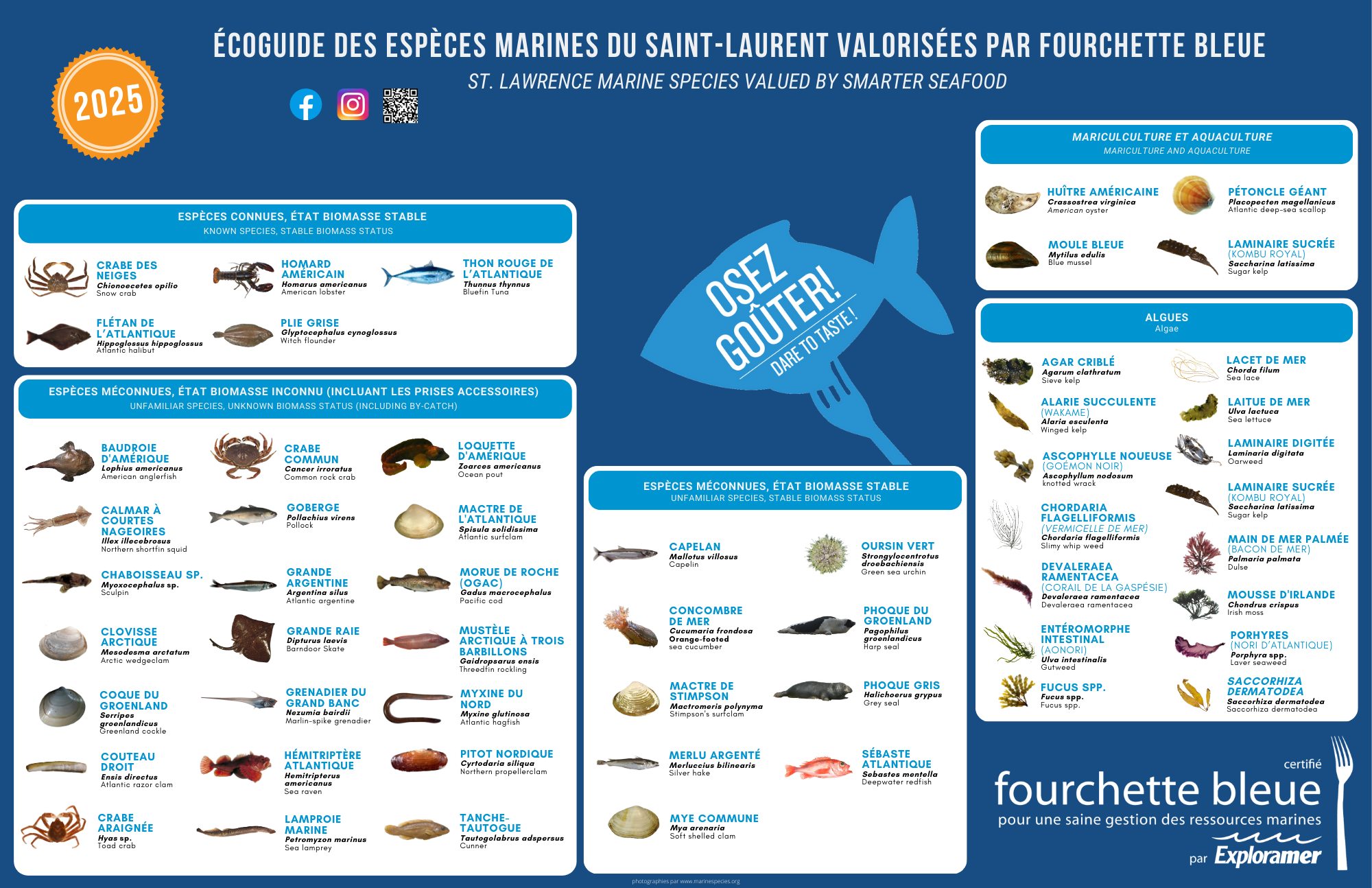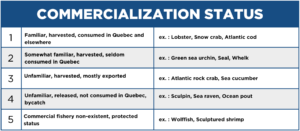What is the ecoguide?
Every year, in anticipation of the new fishing season, Smarter Seafood establishes a list of marine species that are edible, sufficiently plentiful in the St. Lawrence, sustainably harvested with regard to marine ecosystems, and with which consumers may not be overly familiar. These species represent an opportunity to diversify your consumption of seafood products and explore new flavours while supporting the conservation of biodiversity.
Consult the 2025 ecoguide
Methodology
To ensure the soundness of the Smarter Seafood certification, Exploramer has developed a simple, participatory, inclusive and effective methodology to compile its annual list of species that it seeks to promote.
Firstly, it is important to understand what the “Smarter Seafood” label actually stands for. For a species to be considered “Smarter Seafood”, it must fulfil 3 criteria. A species that fails to meet any of these criteria will be removed from the list but will be re-assessed the following year.
The selection criteria are described below. ►
Categories:
a) Species produced via mariculture and aquaculture are considered in the Smarter Seafood ecoguide.
b) Seaweeds are considered in the Smarter Seafood ecoguide.
To be certified, a business must offer at least 2 species from 2 different categories of the ecoguide.
The Smarter Seafood list is reviewed every year according to this same methodology.
To establish the list of Smarter Seafood species, Exploramer first revalidates the stocks of edible species in the St. Lawrence.
Secondly, scientific and commercial data are gathered from content generated by various stakeholders within the scientific community and the fishing industry.
Subsequently, an initial selection is made by Exploramer by cross-matching data. This preliminary list is presented to a committee of social and scientific experts for commentary and critique. The Exploramer team is ultimately responsible for signing off on the final list.





